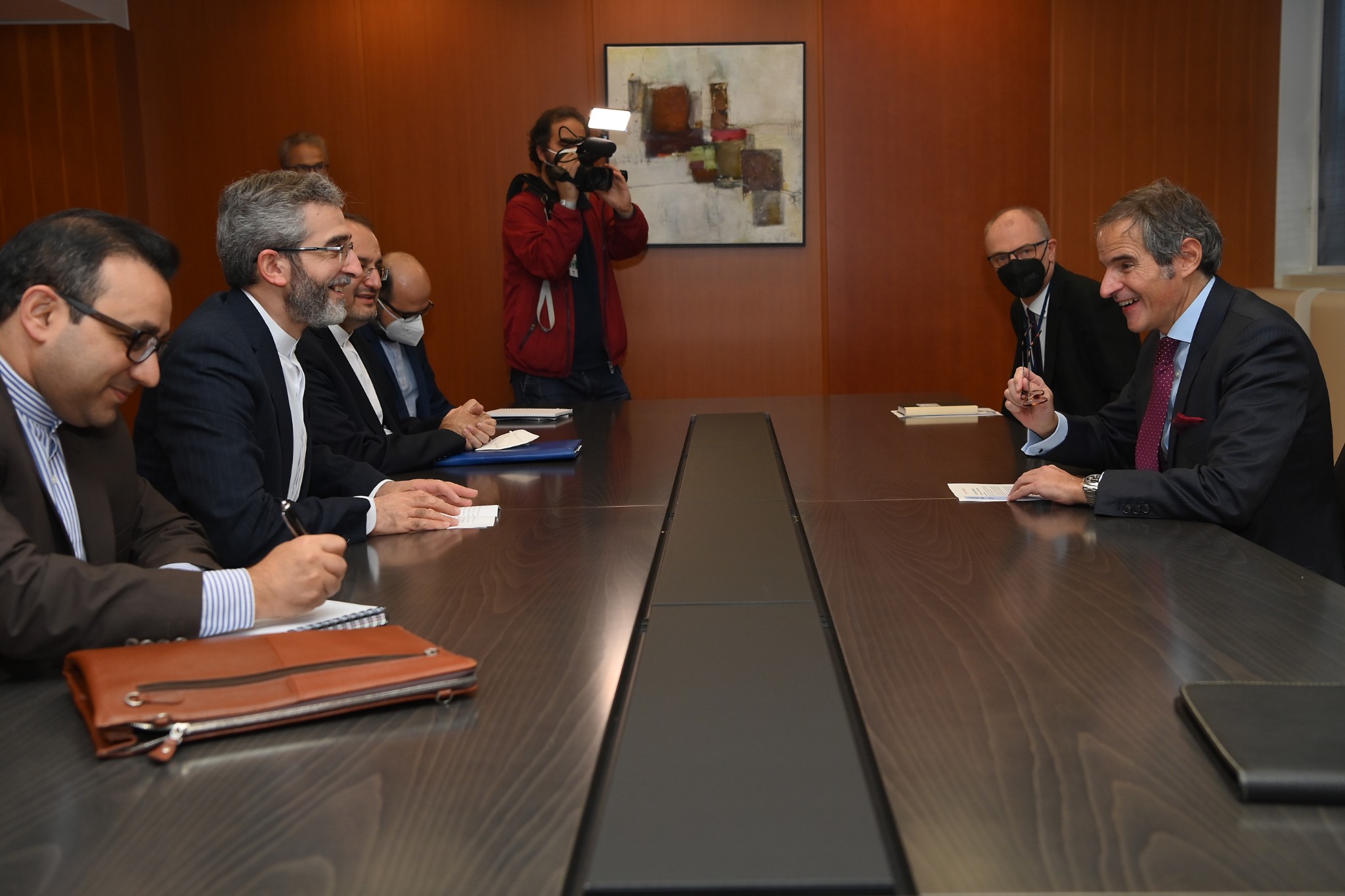 Rafael Grossi and Ali Bagheri-Kani, Vienna, December 2, 2021. Credit: IAEA
Rafael Grossi and Ali Bagheri-Kani, Vienna, December 2, 2021. Credit: IAEA
Iran Nuclear Talks: The Consequences of Failed Negotiations
The Iran nuclear talks resumed on November 29. After an interruption of almost half a year, the negotiating parties — with the U.S. indirectly involved — met in Vienna to discuss the revival of the 2015 nuclear deal. This is the first meeting of the parties since the hardline Iranian President Ebrahim Raisi took office. Yet, the lack of progress in the negotiations indicates that the probability of a collapse may need to be taken seriously.
The talks are overshadowed by a wide range of disagreements. The increasing mistrust between both parties and the lack of direct communication has put additional strain on the talks, making a solution more difficult. Almost immediately after the latest series of efforts resumed, the talks had to be “suspended” as Iran has scaled back many of its compromises proposed in previous talks and “demanded more.” It tabled two draft proposals regarding its nuclear activities and the sanctions imposed on it, along with an anticipated third proposal concerning mechanisms, verification frequency, and issues related to the U.S. future commitments to the deal. These drafts, described as “maximalist demands” by the European parties, include the immediate lifting of all sanctions and a guarantee that no future U.S. government would withdraw from the agreement again. Further, Tehran wants to preserve some of the investments it made regarding its advanced centrifuges and uranium enrichment. Meanwhile, Iran fired an unannounced air defense missile as part of an exercise near the Natanz enrichment facility, a key nuclear facility previously targeted by sabotage attacks. Iran’s negotiating confidence and its higher demands suggest that the violations are being used as “political leverage” to bolster its bargaining power. The Western approach is “compliance for compliance,” with the U.S. trying to revive the deal by extending its term from 15 to 25 years, while at the same time preparing for a “plan B.”
Despite current challenges and with talks continuing today, an agreement is the best option for both sides, considering Iran’s economic situation and for the U.S. to avoid being drawn into another war, considering it has just left Afghanistan and is shifting focus to its China policy. Failure to reach an agreement would be a missed opportunity with dire consequences:
- Iran will almost certainly continue to expand its nuclear program, meaning higher uranium enrichment and further installation of centrifuges.
- Further development would shorten the breakout time that it would take Iran to build a nuclear weapon.
- Iran will continue to limit or block IAEA inspectors from accessing its nuclear facilities.
- The uncertainty around an uncontrolled nuclear program may lead to escalation, possibly including strikes on Iran’s nuclear facilities, cyber warfare, and further sabotage and covert attacks, increasing the risk of a wider war and impacting the political dynamics in the region, while inviting an Iranian response.
- Tehran has acquired enough knowledge to produce weapons-grade uranium; attacks might only set back the country’s nuclear activities, while strengthening its determination to build nuclear weapons.
- Should Tehran cross the nuclear threshold and acquire nuclear weapons, this might shift the regional balance of power while triggering a nuclear arms race in the Middle East.
However, these scenarios can still be avoided if both Iran and the U.S. find a common ground to build on. Both sides seem to have demands that they know the other would disagree with. Iran rejected U.S. demands going beyond its nuclear program, including its activities in the region and its missile program, and political realities in the U.S. mean it could never agree to bind a future government from withdrawal. Progress depends on both parties making some compromises. A proposal that has already been discussed, is a partial or interim deal that would ease the way for a future agreement. Accordingly, Iran would freeze and reserve some of its nuclear activities in return for initial, limited sanctions relief. Should Iran not be willing to negotiate, the U.S. would be in a stronger position globally, especially being able to count on European support. Although a difficult task, it could further try to re-establish the coalition which led Tehran to join the deal in the first place by including Russia and China.
While the prospects for a peaceful solution seem far from clear, a diplomatic solution is still the most cost-effective option. A failure of the talks would have serious consequences for both parties, for the region, and for the credibility of the global non-proliferation regime.





